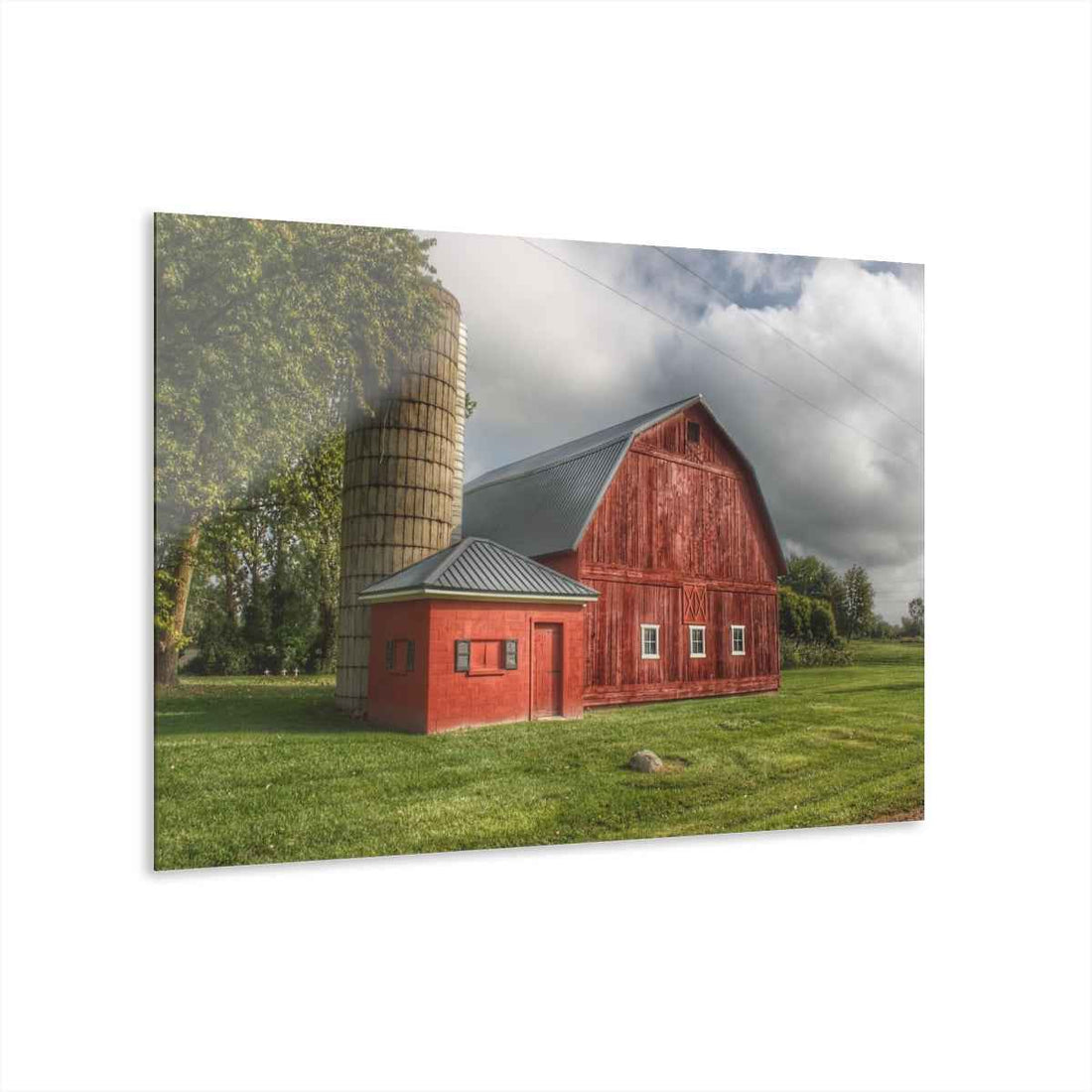
Color Your World - Barn Colors and Their Meanings
Share
Have you ever wondered why so many barns are painted the color red? The answer lies in a mix of tradition, practicality, and regional influence. The color of a barn is not just a random choice; it reflects the agricultural practices, cultural heritage, and even the local environment of the area where it stands.
 The Historical Significance of Barn Colors
The Historical Significance of Barn Colors
Historically, red has been the most popular color for barns, particularly in the United States. This tradition dates back to the early days of American farming when farmers sought an inexpensive and effective way to protect their wooden barns from the elements. They discovered that a mixture of skimmed milk, lime, and red iron oxide (rust) created a durable and protective paint. The rust acted as a fungicide, preventing the growth of mold and moss on the wood, while the red color provided a distinctive and vibrant appearance.
The choice of red was also influenced by practicality. The red pigment from iron oxide was readily available and inexpensive, making it a popular choice among farmers who needed a cost-effective solution. Additionally, the dark color absorbed the sun’s rays, helping to keep the barn warmer during the cold winter months, which was crucial for the livestock housed inside.
Regional Variations in Barn Colors
While red is the most iconic barn color, other colors have also been popular in different regions and periods. For example, white barns are common in areas with a Scandinavian influence, reflecting the clean, bright aesthetic favored by settlers from those regions. Whitewash, made from lime and water, was another economical option that provided a bright, reflective surface, helping to keep the barn cool in the summer.
In some regions, barns are painted black or dark green to blend in with the surrounding landscape. These colors help the barns to merge with their natural environment, providing a subtle and harmonious appearance. In contrast, blue barns, although less common, can be found in certain areas where farmers chose to make a unique statement or follow local traditions.
The Symbolism and Cultural Significance of Barn Colors
Barn colors can also hold symbolic meanings and cultural significance. The red barn, for example, has become an enduring symbol of rural life and American agricultural heritage. It represents hard work, tradition, and the simple, honest lifestyle associated with farming communities. The bright red color stands out against the green fields and blue skies, creating a picturesque and iconic image of rural America.
White barns, with their clean and pristine appearance, often symbolize purity, simplicity, and order. They evoke a sense of nostalgia and timeless beauty, reminding us of a bygone era when farming was the backbone of the economy and community life. These barns are often featured in paintings, photographs, and other forms of art, capturing the essence of rural charm and elegance.
Modern Trends in Barn Colors
In recent years, there has been a resurgence of interest in barn restoration and preservation, leading to a variety of color choices and designs. Some modern barns are painted in bold, vibrant colors to make a statement or reflect the personality of the owners. Others are restored to their original colors, preserving the historical integrity and authenticity of the structure.
Additionally, some barns are left unpainted, showcasing the natural beauty of the wood and allowing it to weather and age gracefully. This approach highlights the craftsmanship and materials used in the construction, creating a rustic and authentic look that blends seamlessly with the surrounding landscape.
The Practicality of Barn Colors
The choice of barn color is not just about aesthetics; it also has practical implications. Different colors can affect the temperature inside the barn, the longevity of the paint, and the overall maintenance required. For example, lighter colors like white and yellow can reflect sunlight, helping to keep the interior cool during hot summer months. Darker colors like red and black can absorb heat, providing warmth in colder climates.
The type of paint used is also important. Modern paints offer a wide range of options, including weather-resistant and UV-protective formulas that can extend the life of the paint and reduce maintenance needs. Choosing the right paint can help protect the barn from the elements, prevent decay, and enhance its appearance for years to come.
Preserving the Tradition of Barn Colors
Preserving the tradition of barn colors is an important aspect of maintaining our agricultural heritage. By understanding the historical, cultural, and practical reasons behind these color choices, we can appreciate the significance of these iconic structures and the role they play in our rural landscape.
Efforts to restore and maintain old barns often involve research into the original colors and materials used, ensuring that the restoration is historically accurate and respectful of the barn’s heritage. This attention to detail helps to preserve the authenticity and charm of these buildings, allowing future generations to experience and appreciate their historical and cultural value.
Conclusion
The colors of barns are more than just a matter of aesthetics; they are steeped in history, tradition, and practicality. From the iconic red barns of America to the pristine white barns of Scandinavia, each color tells a story about the region, the people, and the agricultural practices that shaped them. By preserving and appreciating the colors of barns, we honor the legacy of rural life and ensure that these vibrant symbols continue to inspire and captivate us for generations to come.
